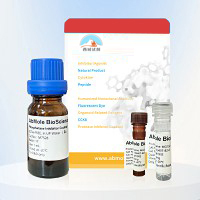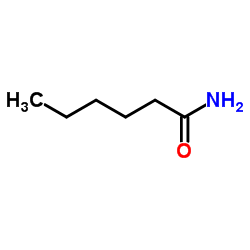聚己内酰胺粉, 60-90目,Nylon 6
产品编号:西域试剂-WR357764| CAS NO:25038-54-4| MDL NO:MFCD00133998| 分子式:[-NH(CH2)5CO-]n| 分子量:115.174
本网站销售的所有产品仅用于工业应用或者科学研究等非医疗目的,不可用于人类或动物的临床诊断或者治疗,非药用,非食用,
| 产品名称 | 聚己内酰胺粉, 60-90目 |
|---|---|
| 英文名称 | Nylon 6 |
| CAS编号 | 25038-54-4 |
| 产品熔点 | 220ºC |
| 产品沸点 | 255.0±0.0 °C at 760 mmHg |
| 产品密度 | 0.9±0.1 g/cm3 |
| 产品闪点 | 102.2±18.4 °C |
| 精确质量 | 115.099716 |
| LogP | 0.89 |
| 外观性状 | 结晶粉末 |
| 蒸气压 | 0.0±0.5 mmHg at 25°C |
| 折射率 | 1.434 |
| 稳定性 | 遵照规定使用和储存则不会分解。 尼龙-6为半透明或不透明的乳白色结晶聚合物,相对分子质量为1.5~3万。尼龙-6具有卓越的抗药物性,在纯水中不会受到化学性侵蚀,对有机溶剂、油、燃料也具有卓越的耐性,对液体氨、亚硫酸等大部分的无机化合物比较稳定,但受过氧化氢及氯系脱色剂等氧化剂的侵蚀,尼龙的耐气候性在各种塑料中居中等位置。尼龙-6有很好的成型表面光泽,即使经过补强也是如此。除机械性、耐热性化学特性之外,尼龙-6还具有卓越的电气特性,透明尼龙具有大部分透明塑料没有的特性。尼龙-6的耐潜变性比尼龙-66好,但模数较低。尼龙-6吸湿性较强,此现象对可加工性、尺寸稳定性和物理特性有影响,会降低抗拉强度和刚性,增加延伸率,但也增加了零件的韧性。尼龙-6可在比尼龙-66大约低27℃的温度下成型。玻璃纤维补强的尼龙会使材料的抗拉强度提高很多,比尼龙基材好大约200%,热变形温度从71℃提升到260℃;碳纤维补强尼龙的抗拉强度与弯曲强度优于尼龙基材和玻璃纤维补强的尼龙,其强度与一些压铸型金属合金差不多。由于含碳纤维材料的高模数、好的耐磨性和消除静电特性,碳纤维补强的尼龙有潜力取代压铸型金属,例如用于制造纺织机械的运动零件。 |
| 储存条件 | 密闭于阴凉干燥环境中 |
相关文档
化学品安全说明书(MSDS)
下载MSDS质检证书(COA)
相关产品
-
CAS号:25038-54-4

聚己内酰胺粉
¥2,450.00
-
CAS号:25038-54-4

聚己内酰胺粉, 20-40 目
¥220.00
-
CAS号:25038-54-4

聚己内酰胺粉, 30-60 目
¥86.00
-
CAS号:25038-54-4

聚己内酰胺粉, 30目
¥86.00
-
CAS号:25038-54-4

聚己内酰胺粉, 通用级, 颗粒...
¥220.00
-
CAS号:25038-54-4

聚己内酰胺粉, 60-90目
¥91.00
-
CAS号:25038-54-4

聚己内酰胺粉, 150-200...
¥97.00
-
CAS号:25038-54-4

聚己内酰胺粉
¥360.00
| 安全声明 (欧洲) | S24/25 |
|---|---|
| 危险品运输编码 | NONH for all modes of transport |
| WGK德国 | 3 |
| RTECS号 | TQ9800000 |
| 海关编码 | 39081019 |
Synonym:Poly(caprolactam); 6-aminohexanoic acid homopolymer; Caproamide Polymer; Hexahydro-2H-Azepin-2-one homopolyme Section 2 - COMPOSITION, INFORMATION ON INGREDIENTS
Risk Phrases: None Listed. Section 3 - HAZARDS IDENTIFICATION EMERGENCY OVERVIEW
Not available. Potential Health Effects Eye: May cause eye irritation. Skin: May cause skin irritation. Ingestion: May cause digestive tract disturbances. Inhalation: May cause respiratory tract irritation. Chronic: No information found. Section 4 - FIRST AID MEASURES Eyes: Flush eyes with plenty of water for at least 15 minutes, occasionally lifting the upper and lower eyelids. Get medical aid immediately. Skin: Get medical aid. Flush skin with plenty of water for at least 15 minutes while removing contaminated clothing and shoes. Ingestion: If victim is conscious and alert, give 2-4 cupfuls of milk or water. Never give anything by mouth to an unconscious person. Get medical aid immediately. Inhalation: Remove from exposure and move to fresh air immediately. If not breathing, give artificial respiration. If breathing is difficult, give oxygen. Get medical aid. Notes to Physician: Section 5 - FIRE FIGHTING MEASURES General Information: As in any fire, wear a self-contained breathing apparatus in pressure-demand, MSHA/NIOSH (approved or equivalent), and full protective gear. During a fire, irritating and highly toxic gases may be generated by thermal decomposition or combustion. Extinguishing Media: Use water spray, dry chemical, carbon dioxide, or alcohol-resistant foam. Section 6 - ACCIDENTAL RELEASE MEASURES General Information: Use proper personal protective equipment as indicated in Section 8. Spills/Leaks: Clean up spills immediately, observing precautions in the Protective Equipment section. Sweep up or absorb material, then place into a suitable clean, dry, closed container for disposal. Avoid generating dusty conditions. Provide ventilation. Section 7 - HANDLING and STORAGE Handling: Wash thoroughly after handling. Remove contaminated clothing and wash before reuse. Use with adequate ventilation. Minimize dust generation and accumulation. Avoid contact with eyes, skin, and clothing. Avoid ingestion and inhalation. Storage: Keep container closed when not in use. Store in a tightly closed container. Store in a cool, dry, well-ventilated area away from incompatible substances. Section 8 - EXPOSURE CONTROLS, PERSONAL PROTECTION Engineering Controls: Use adequate ventilation to keep airborne concentrations low. Exposure Limits CAS# 25038-54-4: Russia: 5 mg/m3 TWA (powder) Personal Protective Equipment Eyes: Wear appropriate protective eyeglasses or chemical safety goggles as described by OSHA's eye and face protection regulations in 29 CFR 1910.133 or European Standard EN166. Skin: Wear appropriate protective gloves to prevent skin exposure. Clothing: Wear appropriate protective clothing to prevent skin exposure. Respirators: Follow the OSHA respirator regulations found in 29 CFR 1910.134 or European Standard EN 149. Use a NIOSH/MSHA or European Standard EN 149 approved respirator if exposure limits are exceeded or if irritation or other symptoms are experienced. Section 9 - PHYSICAL AND CHEMICAL PROPERTIES Physical State: Pellets Color: white to pale yellow Odor: Not available. pH: Not available. Vapor Pressure: Not available. Viscosity: Not available. Boiling Point: Not available. Freezing/Melting Point: 223 deg C Autoignition Temperature: Not available. Flash Point: Not available. Explosion Limits, lower: Not available. Explosion Limits, upper: Not available. Decomposition Temperature: Solubility in water: insoluble Specific Gravity/Density: 1.0840g/cm3 Molecular Formula: NHC5H10CO Molecular Weight: 113.0831 Section 10 - STABILITY AND REACTIVITY Chemical Stability: Stable under normal temperatures and pressures. Conditions to Avoid: Incompatible materials, strong oxidants. Incompatibilities with Other Materials: Strong oxidizing agents, strong bases. Hazardous Decomposition Products: Nitrogen oxides, carbon monoxide, carbon dioxide. Hazardous Polymerization: Has not been reported Section 11 - TOXICOLOGICAL INFORMATION RTECS#: CAS# 25038-54-4: TQ9800000 LD50/LC50: CAS# 25038-54-4: Inhalation, mouse: LC50 = 11 gm/m3/30M. Carcinogenicity: Nylon 6 - Not listed by ACGIH, IARC, or NTP. Other: See actual entry in RTECS for complete information. Section 12 - ECOLOGICAL INFORMATION Section 13 - DISPOSAL CONSIDERATIONS Dispose of in a manner consistent with federal, state, and local regulations. Section 14 - TRANSPORT INFORMATION IATA Not regulated as a hazardous material. IMO Not regulated as a hazardous material. RID/ADR Not regulated as a hazardous material. Section 15 - REGULATORY INFORMATION European/International Regulations European Labeling in Accordance with EC Directives Hazard Symbols: Not available. Risk Phrases: Safety Phrases: S 24/25 Avoid contact with skin and eyes. WGK (Water Danger/Protection) CAS# 25038-54-4: No information available. Canada CAS# 25038-54-4 is listed on Canada's DSL List. CAS# 25038-54-4 is not listed on Canada's Ingredient Disclosure List. US FEDERAL TSCA CAS# 25038-54-4 is listed on the TSCA inventory. SECTION 16 - ADDITIONAL INFORMATION N/A |







 浙公网安备 33010802013016号
浙公网安备 33010802013016号